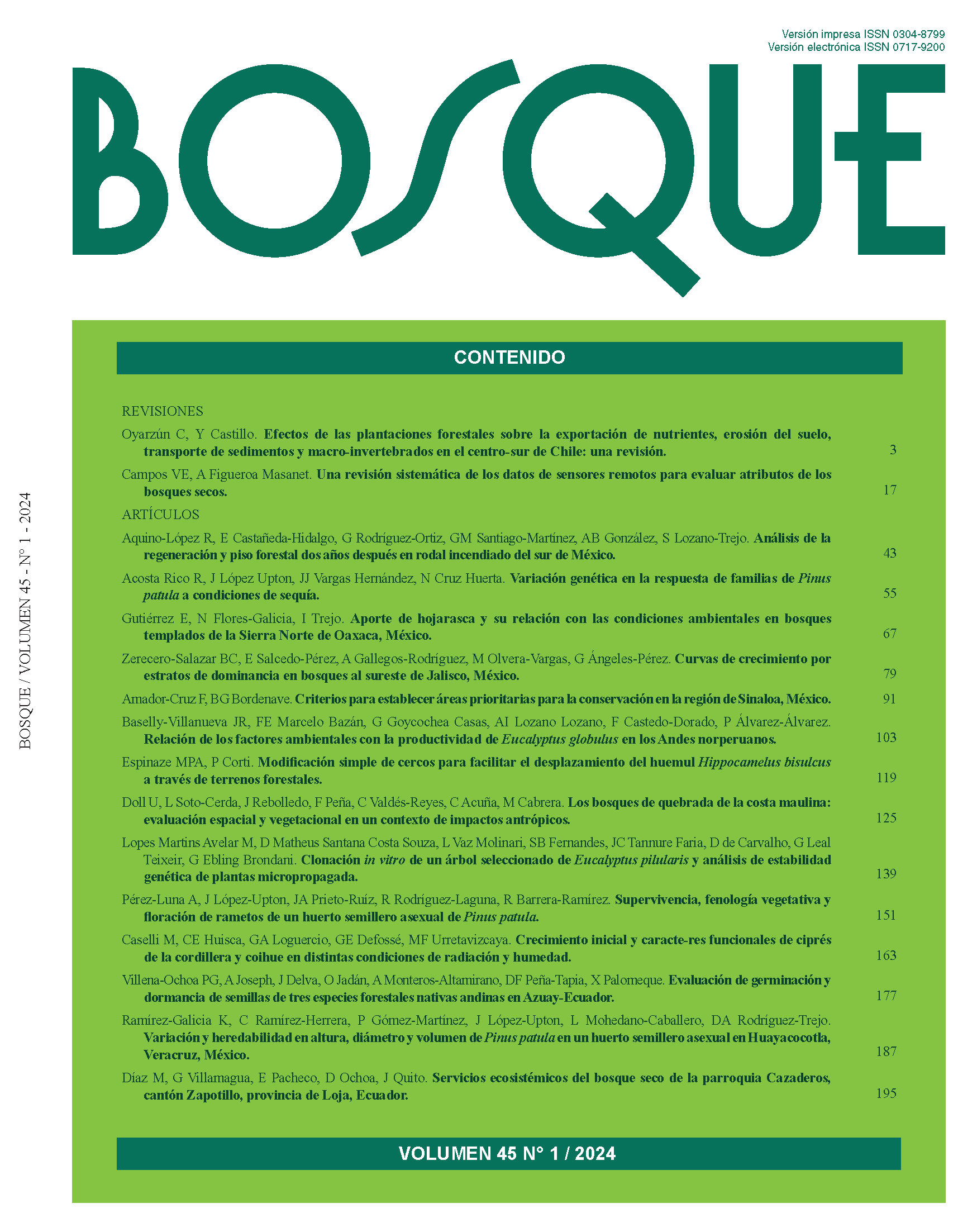A systematic review of remote sensing data to assess dry forests attributes
Main Article Content
Abstract
Ecological indicators are widely used to assess vegetation attributes and can be quantified through field-based and/or remote sensing data. Particularly, advances in remote sensing have allowed monitoring of dry forest attributes across multiple spatiotemporal scales. The objectives were to analyze the recent state-of-the-art in using remote sensing data as ecological indicators to assess dry forest attributes; identify the data source of remote sensing indicators used; and identify the geographical distribution of these studies. A systematic search was conducted for original research articles that used remote sensing data as ecological indicators of dry forests attributes. Composition indicators were assessed with the same frequency at species/population and landscape/region hierarchy levels. However, structural indicators were mainly assessed at the species/population level, and function indicators at the community/ ecosystem level. Over 60 % of the articles considered one ecological indicator, 20.45 % two, and 18.18 % used three indicators. Over 47 % considered field surveys and remote sensing data to assess dry forest attributes, and more than 52 % only had remote sensing data. Four out of the 88 articles analyzed report a weak relationship between field surveys and remote sensing data. Landsat and MODIS products were the most frequently used, with South America being the most studied continent. Observations and products from a single sensor, as well as using only one ecological indicator or one hierarchy level, would not be enough to represent the complexity of dry forest ecosystems.


 https://orcid.org/0000-0002-2431-5619
https://orcid.org/0000-0002-2431-5619